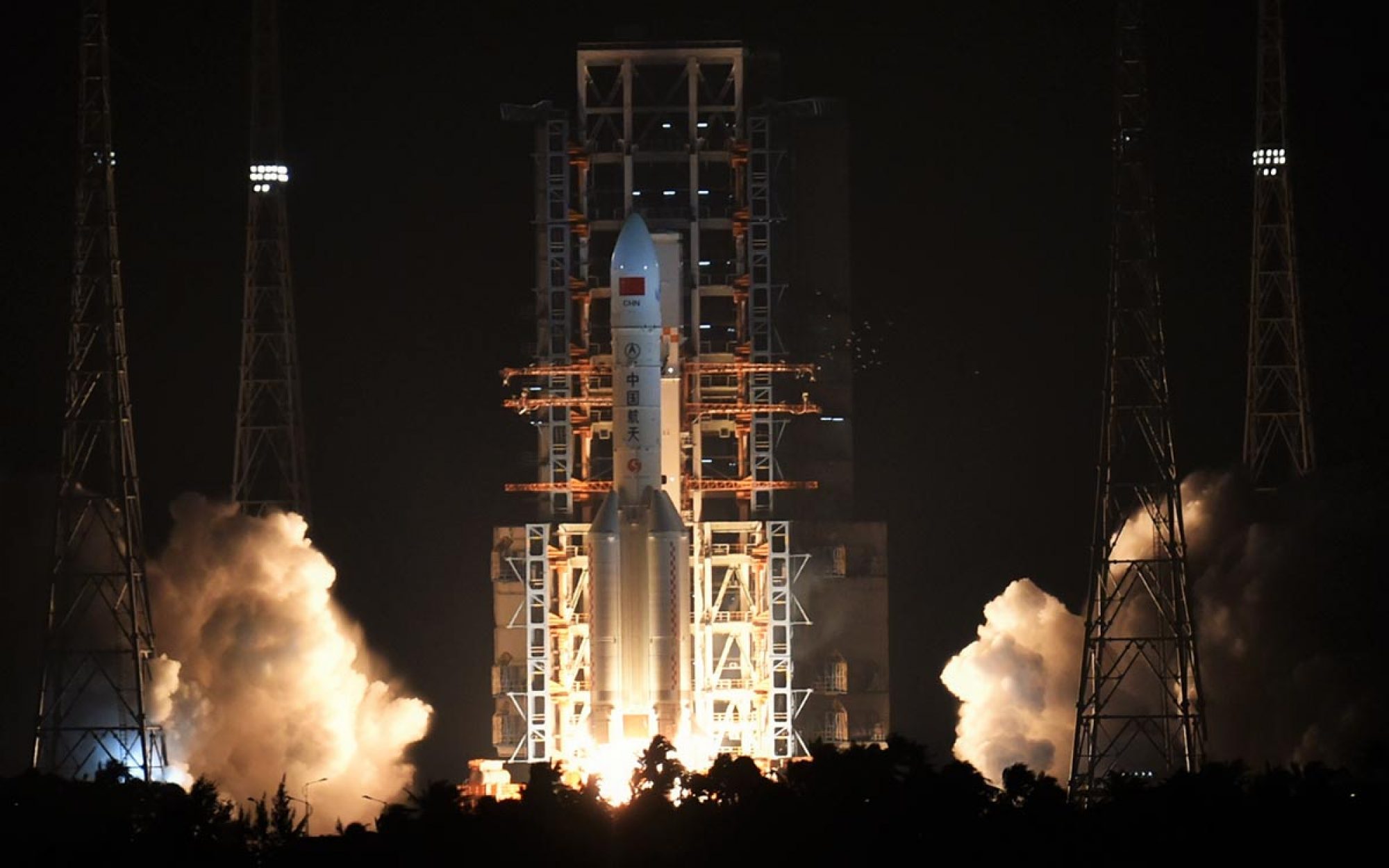Issue #3

This past week has been dominated by two topics: China’s successful flight of their new Long March 5 launch vehicle, and the drift in focus of the United States’ near future from Mars to the Moon.
Long March 5
After a bit of a delay, China successfully launch the new, heavy-lift Long March 5 launch vehicle. It’s the biggest launch vehicle China has operated to date, and is just about equal to the payload capacity of the Delta IV Heavy. I’ve seen some great photos of the launch, and a 2-minute highlight video worth watching.
If you’re like me and love to get deep into the technical details of launch vehicles, Rui C. Barbosa wrote an encyclopedic piece for NASASpaceFlight that I highly recommend checking out. The most interesting—and important—aspects of China’s new generation of launch vehicles are all about fuel and engines. China is finally moving away from the toxic hypergolic propellents they’ve used in the past.
The Long March 5 core and second stages are powered by two YF–77 and two YF–75D engines, respectively, burning liquid hydrogen and liquid oxygen. The 4 boosters are each powered by two YF–100 engines burning RP–1 and liquid oxygen.
Doug Messier wrote a nice post about the four—4!—new launch vehicles China has rolled out over the past 14 months, and it’s definitely worth reading. China’s momentum is impressive right now, and their future looks bright. The Long March 5 is going to have a big role in the coming years launching the main Tiangong–3 modules, the Chang’e 5 lunar sample return mission, and China’s Mars orbiter/lander/rover mission in 2020.
NASA’s Potential Lunar Return
The rest of my week was focused heavily on the potential refocusing of NASA’s near future on the Moon. On the podcast this week, I talked at length about why this idea makes so much sense politically. The bottom line is that missions to the lunar surface supported by SLS/Orion would serve all the needs of NASA’s exploration program.
The less risky nature (timelines of weeks-to-months instead of years, as well as easier, more timely resupply missions), potential collaboration with international and commercial partners, and, as much as we may hate to say it, nostalgia, give a lunar plan much more political capital than a Mars-focused plan.
Even more than that, there is political motivation to focus on the Moon, too. Representative Birdenstine had some very interesting comments pointing to the fact that certain politicians don’t want to be left out as the rest of the world focuses on the Moon. China’s desire to head to the lunar surface, as well as the potential for resource prospecting, will provide plenty of firepower for members of Congress to convince their colleagues that the United States should have a presence there.
There are two articles that I strongly urge you to read, from two sources who seem to have little birdies providing some interesting insight. Eric Berger wrote a piece for Ars Technica on the politics of Mars-versus-the-Moon, and how NASA, ESA, and others are interacting now and how they may interact after the upcoming election here in the United States.
And Anatoly Zak wrote a post for The Planetary Society on a meeting in Houston last week among the ISS partners regarding a lunar orbit station to be built in the mid-to-late 2020s. Both posts are worth your time, and are very insightful as to what we may see over the next few years.
Odds and Ends
Planetary Resources signed a deal with the government of Luxembourg for €25 million in funding. Luxembourg has been trying hard to attract the space mining and resource harvesting companies, and this is another big step in that direction.
The problems with Juno’s main engine may be connected to the problems Intelsat experienced a few weeks ago.
Another Atlas V launch has been delayed. The WorldView–4 launch was previously delayed by “an ice ball that formed on the umbilical.” Strange that this issue has popped up on two stages in a row. Hopefully they can figure out what’s causing it and get a fix in place for the future.
And finally, check out these beautiful photos of Antarctica from research flights as part of NASA’s Operation IceBridge.
Thank you!
Thanks for reading the third issue of Main Engine Cut Off Weekly. Each week, I bring you what I find interesting and important in spaceflight, and you can get it however you like best—blog, podcast, or this here column. If you like what I’m doing, I’d really appreciate your support. Head over to Patreon and become a patron for as little as $1 per month. Everything I do is supported entirely by readers and listeners like you, and every little bit of support helps. Big thanks to those of you out there supporting!
If you’d rather help support another way, I’d love for you to help spread the word—tell a friend about Main Engine Cut Off, tweet a link, or submit something interesting I’m writing or saying to your favorite subreddit.
Thanks for reading, and I’ll talk to you next week.
— Anthony
 Main Engine Cut Off
Main Engine Cut Off